
Why Belief over Evidence is Immoral: a Case Study
by emmaspeaks
A brief overview of the beatification process of Juan Diego and why it is a blatant attempt to perpetuate a lie.
Human's Fatal Flaw
The sad reality is that most people believe what they are told. They don’t question it, but it is also fair to say that they don’t expect to be lied to. This is the reality of the time and world that we live in today. With that being said I am going to analyze a case where evidence was ignored, those who questioned it were silenced, personal beliefs superseded the good of the people, and a blatant lie became an accepted fact for millions of people. I’m talking about the beatification of Juan Diego.
The Case for Juan Diego
For those who have no idea who this Juan Diego is, he was a character in a story written by Miguel Sanchez in 1648. The story, however, was the miraculous story of how the Virgin Mary, in one of her many guises—this time as the Virgen de Guadalupe—appeared before Juan Diego and asked that a temple be built on the hill of Tepeyac in her honor. This event supposedly took place in December of 1531. The fact that it was written about over one hundred years later was excused by the critiques of the time, accepting that records of such a miraculous event were just lost. Never mind that other records—like the ones that were left by Bishop Juan de Zumarraga, the supposed bishop in 1531 that witnessed part of this miracle—are all perfectly intact. And let’s even overlook the fact that not a single document that has anything at all to do with Bishop Zumarraga mentions or even alludes to such a miracle. You know what? I’ll even forgive that Zumarraga was not even a bishop at the time, as the miracle account claims. Mistakes can be excused when there is a one hundred and seventeen year gap between the time of the event and the time it was written down. So, where is the lie, you ask?
Beatification 1-2-3
Despite all the other discrepancies, that should be a red flag to the parties involved in deciding if this person is deserving of beatification, the only “evidence” there is for the existence of Juan Diego is this questionable miracle account.
Let me give you a brief overview of the process of making a person a saint. The first step is an investigation into the proposed person’s life and writings. This happens at the local level and anyone can initiate the process. After evaluations by several experts, and if everything can be confirmed, the result is beatification. The next step is canonization and this can take decades. There has to be evidence of miracles associated with the person in question and there has to be overwhelming support for making the person a saint.
In the case of Juan Diego, stage one began in 1979 and lasted until 1981, but any actual “evidence” resulting from this stage is nonexistent because officials in Rome died or retired during the process. Not a very good excuse if you ask me, but that is the one that the Vatican will give. In 1984 it was further decided that that evidence of a miracle would not be necessary because Juan Diego’s beatification was based on devotion to him as a holy person since the sixteenth century. In other words, he’d had a long time fan base, and that was good enough. Furthermore, it was decided that a historical study of his life would not be necessary. The skeptic in me wonders why this was decided after the two years of research into his life. Could it be that nothing turned up?
Next Step, Canonization
Well, I’m not the only one with doubts. In December of 1984, Monsignor Guillermo Schulenburg Prado forwarded to Rome some observations by Father Jose Martin Rivera which questioned whether Juan Diego had actually existed. While this caused a considerable delay, in 1990 Rome gave the green light for beatification. May 6, 1990, was the official date of beatification and Pope John Paul II presided. The funny thing about this ceremony, though, is that while the pope beatified three child martyrs during this supposed ceremony for Juan Diego, his name was never mentioned—not even once. However, the Acta Apostolicae Sedis, the official record of what happened, does contain such references.
The rest of this process took on the form of a steamroller. Nothing could stand in its way. Canonization, which usually takes twenty five years and a miracle during that time, was reduced to five years. This was because, out of nowhere, a document on deer hide supposedly dated back to 1548 materialized with scenes of the apparitions and some inscriptions in Nahuatl describing Juan Diego’s life and death. Despite strong opposition to this “new” evidence that was not allowed to be tested, the Vatican pushed it through. The next seven years were more of the same. On February 26, 2002, Juan Diego’s canonization was approved and set for July 30th of the same year.
Books on This Topic
What Really Happened
Okay, so the Vatican merely gave the people of Mexico what they wanted, right? The Virgen of Guadalupe was already their national symbol and patron saint—it only made sense that the other character of the legend be made a saint, as well. Here’s the problem with that thought process. You don’t give a child candy for breakfast just because they get to have it after dinner. Similarly, perpetuating a lie just to appease, or satisfy the mob, does not make what you did virtuous act. The Vatican failed here.
Here’s what actually happened. The Virgen de Guadalupe had already been declared a true deity and saint. Not following that up with Juan Diego, whom she supposedly appeared to, would require that some sort of retraction be made in reference to the Virgen de Guadalupe, also known as the Mother of God. This was less about proving a human existed and completely about not having to admit that a huge lie was told. The argument by believers that at least this gives people a reason to have hope is absurd. Believing a lie equals hope? Maybe I’m missing something. The moral of this story is—don’t take questionable events for granted, even if they carry the Vatican’s stamp of approval.
References
Poole, Stafford. "History versus Juan Diego." The Americas, Vol. 62, No. 1 July 2005: 1-16.
You might also like
Conclave: a reviewConclave is a film which covers the secretive and fascinating process of el...
Hope: a reviewHope is the autobiography of Pope Francis detailing his life from early child...
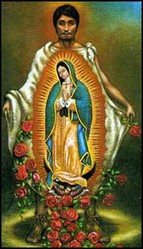

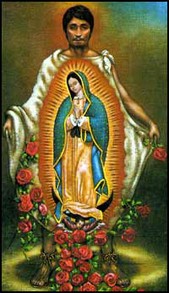
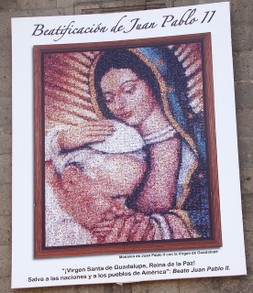




 Romeo and Juliet-the Gang Warson 01/07/2012
Romeo and Juliet-the Gang Warson 01/07/2012
 The Inevitability of Progresson 01/03/2012
The Inevitability of Progresson 01/03/2012
 An Open Letter to All Ron Paul Supporterson 12/29/2011
An Open Letter to All Ron Paul Supporterson 12/29/2011
 How to Divorce Your Cable Company and Not Look Backon 12/28/2011
How to Divorce Your Cable Company and Not Look Backon 12/28/2011

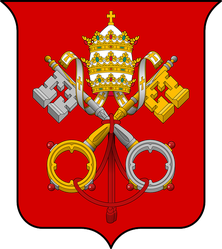
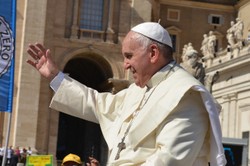
Comments
So what do you think, therefore, of the supposed visions? I am rather sceptical that Mary, a saint if ever there was one, would want a church/temple in her honour, as saints give honour to God not themselves.
Much canonisation is about popular cultus, and John Paul, a populariser of the church, was rather enthusiastic about declaring saints, too enthusiastic for my liking.
As someone who has an academic interest in religious experience, I am rather concerned about visions, some of which can be faked, though not all are, which makes discerning true from false so difficult.
The reason why Pope John Paul II did not mention Juan Diego during the ceremony to declare him a saint is because That is not his name. His name was Cuauhtlatoac. He was a relative of the great Nezahualcoyotzin and he was not a young man. He was 52 years old. Had the conquest been averted, he Cuauhtlatoactzin may have become emperor since he was of royal lineage and a sage. If you dig deep enough, and talk to Mexica elders you will find a different account from the indigenous oral tradition. I have no credentials that you would recognize, however I have been studying on my own for a quarter century now and dancing traditional for 20 years. I think that qualifies me to speak and write on the subject being discussed here. Ometeolt
Thank you, Jo! I'm glad you found it interesting.
I'm already familiar with this story from an historical perspective. It was important to the Vatican at the time to convert the Mexican people to Catholicism. This was a period when the teachings of Luther and the spread of the Protestant faith was threatening the church in Rome. Once Mexico converted, it effectively gave Catholicism an adrenaline shot, which helped hugely in its survival.
I thought this a very interesting article to follow up on my prior knowledge. Thank you for writing it.